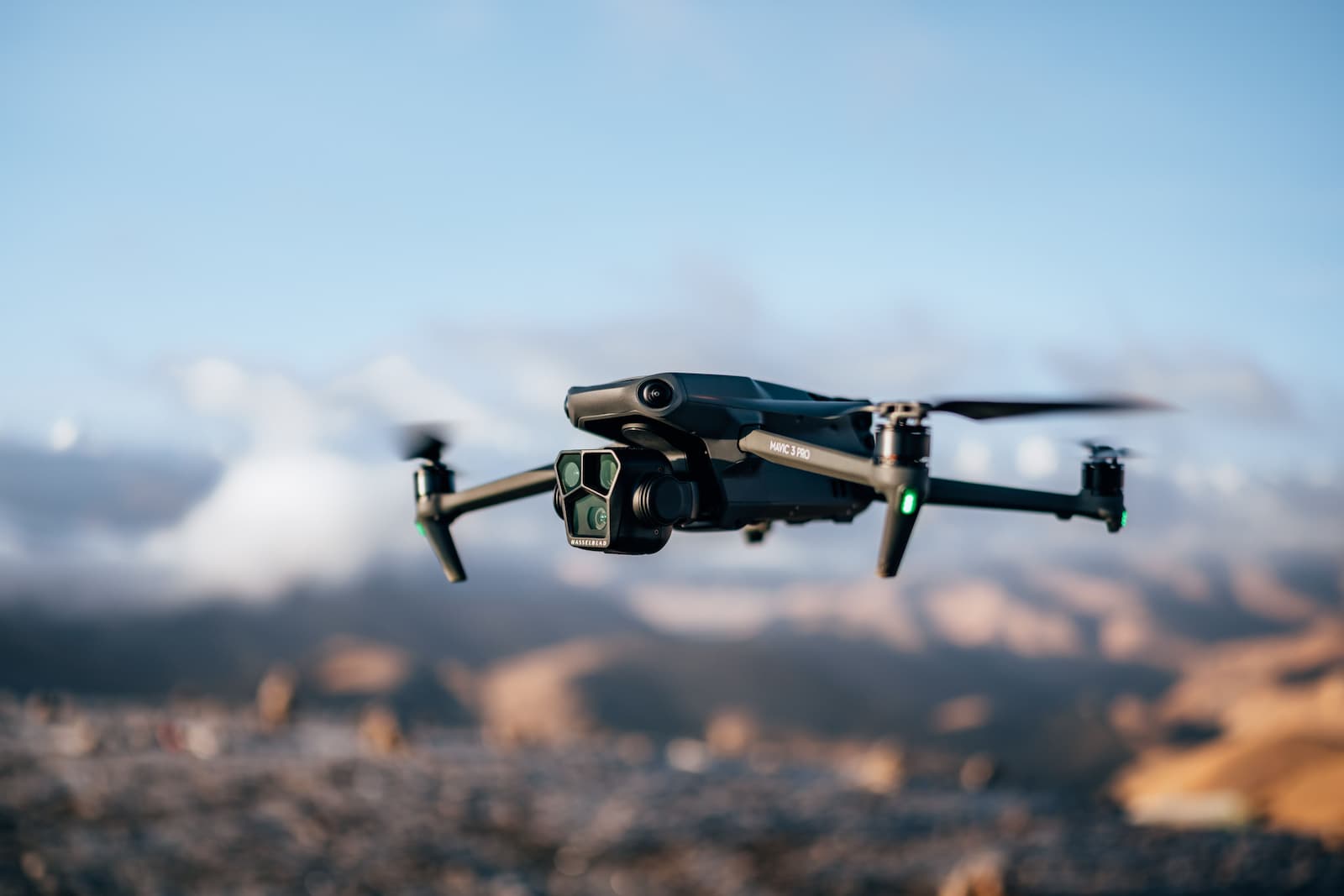It’s been just over three years since the launch of DJI’s flagship Mavic 3 drone, a two-camera beast of a device with a 24mm equivalent wide-angle 4/3 CMOS Hasselblad camera and a 166mm equivalent telephoto camera for long-distance shooting. Now, the Chinese company is looking to one-up itself with the DJI Mavic 3 Pro, just announced as the world’s first drone with three optical cameras.
On paper, it’s a show-stealer, adding a third 70mm equivalent medium telephoto to add a flexible middle ground.
A triple-camera array wasn’t expected but creators, filmmakers and hobbyists will no doubt welcome the $3,099 drone, which arrives alongside the film-focused Mavic 3 Pro Cine and a bunch of packaged combos typical of DJI’s flagship releases.
First, let’s get all the AUD prices out of the way:
DJI Mavic 3 Pro Australian Price
- Mavic 3 Pro (RC) – $3,099
- Mavic 3 Pro Fly More Combo (RC) – $4,199
- Mavic 3 Pro Fly More Combo (RC Pro) – $5,329
- Mavic 3 Pro Cine Premium Combo (RC Pro) – $6,939
- DJI Goggles 2 Motion Combo – $1,299
- DJI Goggles Integra Motion Combo – $999
DJI Mavic 3 Pro Features
As with all these big tech releases, it’s always best to get the exact specs out of the way first. Here goes:
- 24mm 4/3 CMOS Hasselblad camera
- 70mm medium telephoto camera
- 166mm telephoto camera
- OccuSync 03+ technology with 80MB/s file transfer speeds
- Wi-Fi 6
- 1080p/60p live feed to DJI RC controller
- FocusTrack
- MasterShots
- Apple ProRes encoding – 422 HQ, 422 and 422 LT (Cine version only)
- 1TB internal storage (Cine version only)
The Hasselbled camera is still the drone’s main shooter, capable of a max resolution of 5.1K at up to 50 fps with the ability to shoot slow motion at 120 fps with DCI 4K mode. The well-reviewed camera has been the MVP for DJI’s reputation, complemented by the new 3x camera which can shoot video at 4K/60 fps and take photos of up to 48 MP on a 1/1.3″ CMOS sensor. Not much has changed for the 166mm tele camera except it’s now got a light upgrade with support for a wider f/3.4 aperture and support for 4K/60 fps video.
A significant boost in camera power and processing would typically mean poorer battery performance and it looks like DJI hasn’t gotten away with the inevitable. You’d probably want a few spares if you’re travelling with this thing seeing as the Mavic 3 Pro is rated at a maximum of 43 minutes of flight time, which is only a slight step down from the standard Mavic 3. If you’re firing at all cylinders, however, with APAS 5.0 obstacle avoidance technology and video recording then you’ll likely get a much shorter flight time.
Again, spare batteries are a must.
















